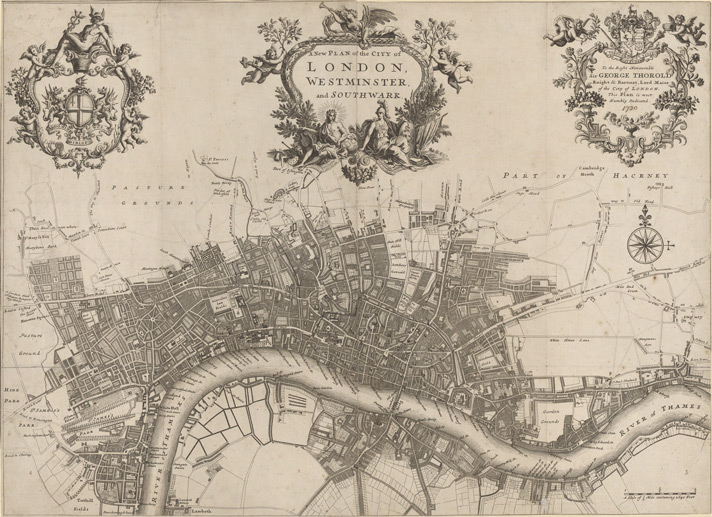James Morland: 'A Literary Topography of the City of London'
Trawling through a database from 1650 to 1800 whilst sitting in the clock tower on Chancery Lane trapped in starkly lit, windowless white box number ‘4’, or in the simultaneously overheated and overchilled department on Kingsway, I find myself constantly at the heart of my research. Monotonously documenting the publication history of the translations central to my study has instead turned into a mapping of the 1-mile radius surrounding my research vantage point. The ‘Bibliographic’ column instead becomes the topographic:
The Strand
Catherine Street
Chancery Lane
Middle Temple Gate
Fleet Street
Black-Fryars
Temple-Bar
Pater-noster Row
Little Britain
Gray’s Inn
Stretching from Nelson’s Column to St Paul’s, they are the London landmarks and checkpoints of my morning commute. My own personal guided tour of the eighteenth-century interaction with Lucretius. My university life is a constant retracing of my research’s physical history. A daily pilgrimage of sorts; I pay my dues to the producers of these texts through walks from library to library to study the product of their work.

As I print the copies of these texts from my department on Kingsway, they gain another printed life in the centre of the square mile of their original emergence. By adding my own 21st century marginalia the texts are born anew, becoming my own manuscripts as I hope they will ‘guide [my] searching mind to farther truth’.
In this search I use the poem as my guide:
Pursue coy Truth with an unerring sense
Into her close recess, and force her thence:
Go briskly on, and in such things as these
Ne’er doubt, I’le promise Thee deserv’d success
It is in this pursuit and promise of success that I walk the close recesses of London herself. I weave through the Rows, Inns, Gates and Bars as my eighteenth-century counterparts in my search for ‘coy Truth’, becoming a new addition to the ‘curious Youth’ Creech’s translation of Lucretius’ poem originally appealed to. Retracing the history of my text, I cover 150 years in an hour’s circuit.
Through my poetic walk, Lucretius promises that ‘We from one Thing known/ To hidden Truths successfully go on’. These landmarks are my current ‘one Thing known’ in the depths of my uncertain research, not just cells of data but physical connectors between me and the eighteenth-century readers I’m trying to understand.
Here my research has a sense of true belonging, from my vantage point on Kingsway the streets of this eighteenth-century city pull me along, retracing the journey of my texts to uncover the ‘hidden Truths’ waiting to be discovered.
To turn to John Banks in 1738, ‘This is London! how d’ye like it?’
James Morland is a first year PhD student in the English department at KCL, researching the changing interactions with Lucretius and Epicurean philosophy in eighteenth-century poetry. After spending a year in art school, James has spent the past few years studying English literature, though constantly tries to find ways to tie together the academic and visually creative sides of his thinking. Follow him @jameswmorland
